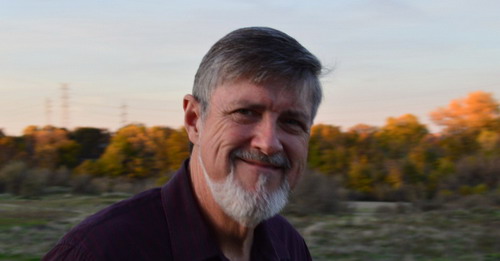The time of year for harvest celebrations is upon us. In the good old USA, we codify this as the traditional 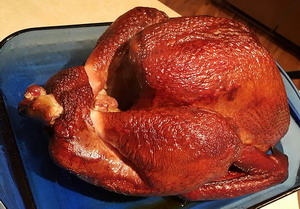 Thanksgiving celebration. Many other countries also have their own Thanksgiving celebrations with their own unique historical stories attached to them. Throughout the northern hemisphere, this
time of year is when crop harvests are finishing up and preparation for the oncoming winter months takes place. Harvest season involves a lot of work, and when it is finished folks want to celebrate a job well done.
Thanksgiving celebration. Many other countries also have their own Thanksgiving celebrations with their own unique historical stories attached to them. Throughout the northern hemisphere, this
time of year is when crop harvests are finishing up and preparation for the oncoming winter months takes place. Harvest season involves a lot of work, and when it is finished folks want to celebrate a job well done.
One of the key traditional aspects of harvest time in rural societies is that everyone has to pull together in cooperative efforts to get the harvest in and put away 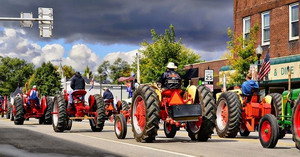 for later consumption. The Thanksgiving celebration is not just giving thanks for the bounty of the harvest, but also for the community connections
of friends and neighbors that you count on for mutual help and support. This is actually a celebration of the development of our ability to form mutually supportive communities to enhance our survival. This ability is what catapulted humans to the top of the food chain. Good job humans!
for later consumption. The Thanksgiving celebration is not just giving thanks for the bounty of the harvest, but also for the community connections
of friends and neighbors that you count on for mutual help and support. This is actually a celebration of the development of our ability to form mutually supportive communities to enhance our survival. This ability is what catapulted humans to the top of the food chain. Good job humans!
Building mutuality is part of the skill of feeling good. I am going to have to create some definitions for the words I will be using in order to tease out the message of this newsletter. Philosophers have been 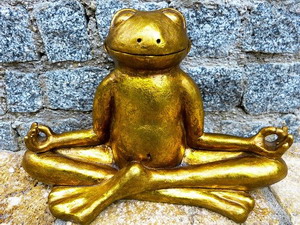 arguing over 'what is the nature of the good' for thousands of years. I wish to
focus on the difference between good and exciting. In terms of brain physiology, these are very different states of being. Feeling good is about a steady-state baseline feeling of inner balance and harmony. It is a reflection of the proper balance in the running of the autonomic nervous system. It is a statement that your needs are met and you are at peace. Contentment is another word for feeling good. This is the definition I wish to use when referring to
feeling good.
arguing over 'what is the nature of the good' for thousands of years. I wish to
focus on the difference between good and exciting. In terms of brain physiology, these are very different states of being. Feeling good is about a steady-state baseline feeling of inner balance and harmony. It is a reflection of the proper balance in the running of the autonomic nervous system. It is a statement that your needs are met and you are at peace. Contentment is another word for feeling good. This is the definition I wish to use when referring to
feeling good.
As opposed to feeling good, we have the brief feeling experience of excitement. Psychologists refer to these as peak experiences; high points in the terrain  of normal average experience. The part of the brain that processes these experiences looks for contrast, so it also highlights lows as much as
highs. In fact, a key part of the experience of a high is the contrast with a low. In common experience this might look like being in lack, not getting a need met, or producing a low feeling. This is reversed when the lack is filled and we move into the excitement of that fulfillment. Say you are lonely and bored and you meet someone new that really thrills you. First you go into hope of connection in anticipation of how exciting it will feel. Then if you
successfully make a connection that excitement becomes realized. You feel joyous.
of normal average experience. The part of the brain that processes these experiences looks for contrast, so it also highlights lows as much as
highs. In fact, a key part of the experience of a high is the contrast with a low. In common experience this might look like being in lack, not getting a need met, or producing a low feeling. This is reversed when the lack is filled and we move into the excitement of that fulfillment. Say you are lonely and bored and you meet someone new that really thrills you. First you go into hope of connection in anticipation of how exciting it will feel. Then if you
successfully make a connection that excitement becomes realized. You feel joyous.
The brain chemistry involved in the high is inherently self-limiting. The rush of brain chemicals for the high overloads the brain and it turns down its receptivity to those chemicals. Unfortunately when life moves  forward and the sharp contrast between lack/want and fulfillment is no longer there, your
brain tries to return to its baseline normal feeling. But the receptors for the joyful feeling have been turned down, so normal feels lower than it did before. The experience of the high actually lowered your baseline feeling state. This makes you feel more in lack and you seek the high once again. This is the addiction cycle that excitement experiences typically create.
forward and the sharp contrast between lack/want and fulfillment is no longer there, your
brain tries to return to its baseline normal feeling. But the receptors for the joyful feeling have been turned down, so normal feels lower than it did before. The experience of the high actually lowered your baseline feeling state. This makes you feel more in lack and you seek the high once again. This is the addiction cycle that excitement experiences typically create.
The understanding of this cycle has been around for thousands of years. This is why ancient Hindu texts promote letting go of passions in favor of being 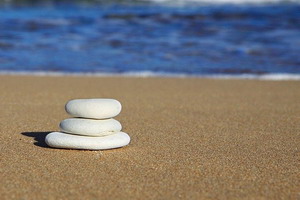 neither for nor against. This viewpoint tries to answer the cyclic nature of the part of our brain that seeks out contrast in favor of the more
fundamental mechanisms that promote harmony and balance in the body. It is these same fundamental mechanisms that we experience in our outer life when we generate balance and harmony between people in our world. Thanksgiving is a celebration of the triumph of mutuality and connection with those in our world. At least that is what I feel the real celebration of Thanksgiving is about. Feeling good is that balanced state inside ourselves as well as in our outer
world.
neither for nor against. This viewpoint tries to answer the cyclic nature of the part of our brain that seeks out contrast in favor of the more
fundamental mechanisms that promote harmony and balance in the body. It is these same fundamental mechanisms that we experience in our outer life when we generate balance and harmony between people in our world. Thanksgiving is a celebration of the triumph of mutuality and connection with those in our world. At least that is what I feel the real celebration of Thanksgiving is about. Feeling good is that balanced state inside ourselves as well as in our outer
world.
What is this line of contemplation leading to? The way it came to me this morning is that the way to be happy, to feel good, is to let go of wanting. To want is automatically to be focused on your lack and your  desire to fill that lack. Wanting is not a happy, feeling good place. Feeling good is
where we are designed to be most of the time. It gets interrupted momentarily by hunger, thirst, physical discomfort – things most of us can generally address fairly easily. Feeling good is a right here and now experience because feeling is based on physical sensations. We can not feel the physical sensations of the past or the future, only now. It is only when we get the thinking brain involved that we are able to imagine or re-imagine the past or future through
memory and projection. Our memories and projections are tangled up with judgments and desires so deeply that the truth of what is becomes almost impossible to see.
desire to fill that lack. Wanting is not a happy, feeling good place. Feeling good is
where we are designed to be most of the time. It gets interrupted momentarily by hunger, thirst, physical discomfort – things most of us can generally address fairly easily. Feeling good is a right here and now experience because feeling is based on physical sensations. We can not feel the physical sensations of the past or the future, only now. It is only when we get the thinking brain involved that we are able to imagine or re-imagine the past or future through
memory and projection. Our memories and projections are tangled up with judgments and desires so deeply that the truth of what is becomes almost impossible to see.
This is part of the essence of Thanksgiving; the expression of gratitude for what we have. It is letting go of the fear of lack and feeling good with what we 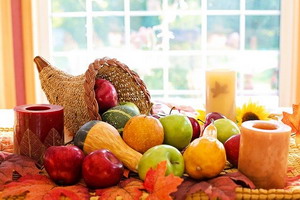 have. That is the point of a harvest celebration. We have harvested the fruits of our hard work and those fruits will take care of our needs
during the barren times ahead. We let go of lack and celebrate our abundance at this moment. Gratitude feels good – it is the opposite of focusing on lack. The driving need to work is over and it is time to rest, time to party, time to enjoy our connection to friends and family. The present moment is enough. It feels good.
have. That is the point of a harvest celebration. We have harvested the fruits of our hard work and those fruits will take care of our needs
during the barren times ahead. We let go of lack and celebrate our abundance at this moment. Gratitude feels good – it is the opposite of focusing on lack. The driving need to work is over and it is time to rest, time to party, time to enjoy our connection to friends and family. The present moment is enough. It feels good.
The question becomes, how can we live in the thanksgiving state all the time? How can we feel the present moment is enough and feel good most of the time? I suggested letting go of want, of stepping out of desire and into embracing the fullness of the now moment. That sounds like a pretty big task. But it may not be as hard as it sounds once we understand  the context around it. Research on the question “does money buy happiness” shows us a way to understand this. That research has shown that if you have no money, getting money makes you much happier up till the point you get your basic average survival needs met. Then it stops. If you don't have a place to live, affording a house or an apartment really feels
good. Buying a mansion does not make you feel any better. The mansion is very exciting for about two weeks, but then your system settles back down to normal. The same thing happens with lottery winners.
the context around it. Research on the question “does money buy happiness” shows us a way to understand this. That research has shown that if you have no money, getting money makes you much happier up till the point you get your basic average survival needs met. Then it stops. If you don't have a place to live, affording a house or an apartment really feels
good. Buying a mansion does not make you feel any better. The mansion is very exciting for about two weeks, but then your system settles back down to normal. The same thing happens with lottery winners.
This information reveals the secret we are looking for. Our happiness runs on the same mechanisms in our life as it does in our bodies. We need to meet our functional survival needs moment to moment. This is essential for homeostasis (balance) inside the body just as it is in our outer life. But the drive to seek  more than this comes from an emotional belief in lack that is not really about our survival. Trying to meet emotional needs with outer stuff fails and only makes us unhappy. You can not banish emotional fear and lack of physical abundance. Eliminating fear is an inside job. One big step in that direction is to embrace what abundance you do have here and now and enjoying it. Feel the ease that it gives you. That ease is the basis for
gratitude. That gratitude forms the foundation on which you build the feeling of worthiness and courage to actually banish the fear inside you.
more than this comes from an emotional belief in lack that is not really about our survival. Trying to meet emotional needs with outer stuff fails and only makes us unhappy. You can not banish emotional fear and lack of physical abundance. Eliminating fear is an inside job. One big step in that direction is to embrace what abundance you do have here and now and enjoying it. Feel the ease that it gives you. That ease is the basis for
gratitude. That gratitude forms the foundation on which you build the feeling of worthiness and courage to actually banish the fear inside you.
Take care,
David
We have received a third batch of  copies of my book The Balanced Life. They are available in the office for $17.99, and they are also
available on Amazon.com
copies of my book The Balanced Life. They are available in the office for $17.99, and they are also
available on Amazon.com
Ellen update:
We have the great picture mystery this week. A  couple years ago Ellen was experimenting with a new type of painting style she was inventing. She would paint with oils onto an acetate sheet, and while still wet she would squish the
image onto a board painted with a black matte paint. That is at least how I remember it. Now somehow she did something else that ended up becoming the glassed print she is holding on the right. On her left is the squished original. So the question is, what did she do to generate the lines on the final print?
couple years ago Ellen was experimenting with a new type of painting style she was inventing. She would paint with oils onto an acetate sheet, and while still wet she would squish the
image onto a board painted with a black matte paint. That is at least how I remember it. Now somehow she did something else that ended up becoming the glassed print she is holding on the right. On her left is the squished original. So the question is, what did she do to generate the lines on the final print?
